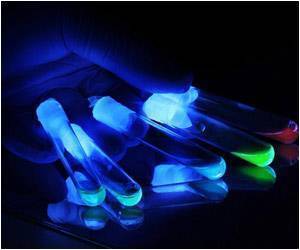MUSE or Microscopy with ultraviolet surface excitation uses ultraviolet light instead of visible light to assess high-resolution images within minutes.

‘Microscopy with ultraviolet surface excitation (MUSE) uses ultraviolet light to illuminate samples to assess high-resolution images within minutes without destroying the tissues.’





The technology, known as microscopy with UV surface excitation, or MUSE, uses ultraviolet light at wavelengths below the 300 nanometer range to penetrate the surface of tissue samples by only a few microns (about the same thickness of tissue slices on traditional microscope slides.) The phenomenon was originally described by Stavros Demos, one of the co-authors, who is now at the University of Rochester.Samples that have been stained with eosin or other standard dyes to highlight important features such as nuclei, cytoplasm and extracellular components produce signals from the UV excitation that are bright enough to be detected by conventional color cameras using sub-second exposure times. The process allows for rapid imaging of large areas and immediate interpretation.
Richard Levenson with MUSE technology"MUSE eliminates any need for conventional tissue processing with formalin fixation, paraffin embedding or thin-sectioning," said Richard Levenson, professor and vice chair for strategic technologies in the Department of Pathology and Laboratory Medicine at UC Davis and senior author of the study.
"It doesn't require lasers, confocal, multiphoton or optical coherence tomography instrumentation, and the simple technology makes it well suited for deployment wherever biopsies are obtained and evaluated," he said.
MUSE's ability to quickly gather high-resolution images without consuming the tissue is an especially important feature.
Advertisement
"Making sure that the submitted material actually contains tumor in sufficient quantity is not always easy and sometimes just preparing conventional microscope slices can consume most of or even all of small specimens. MUSE is important because it quickly provides images from fresh tissue without exhausting the sample."
Advertisement
The technology is being commercialized by MUSE Microscopy Inc.
Source-Eurekalert










